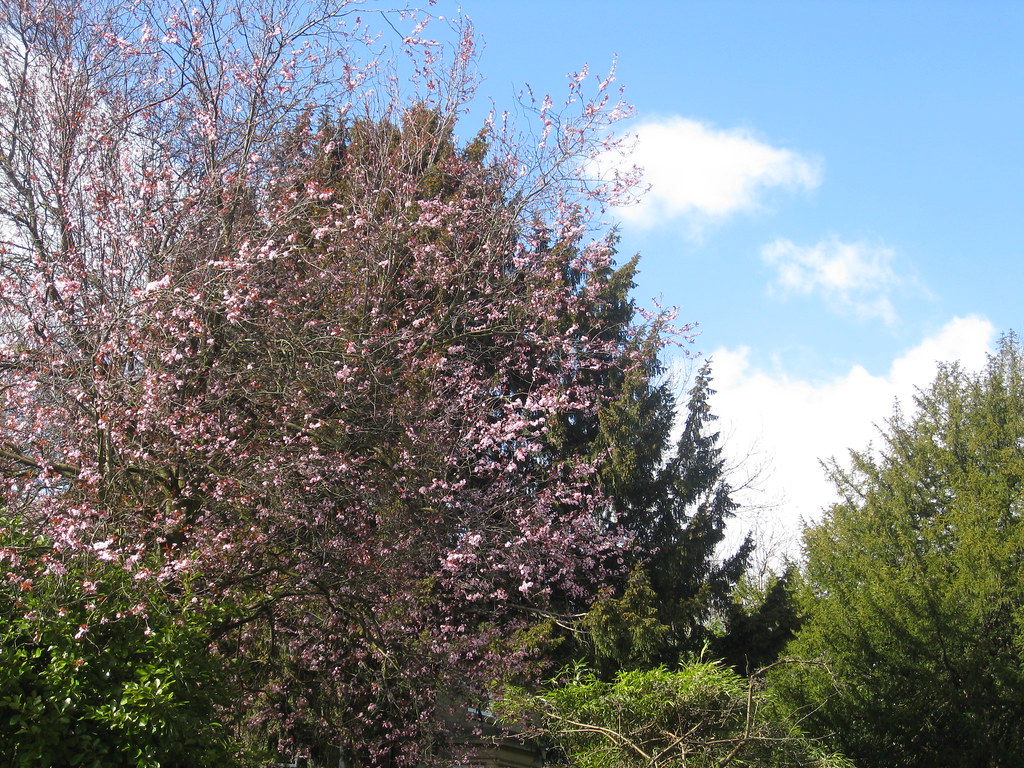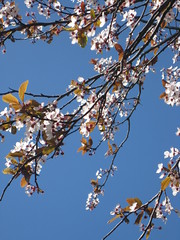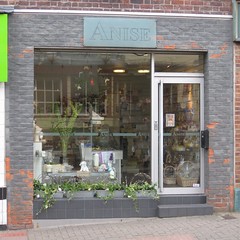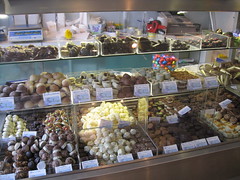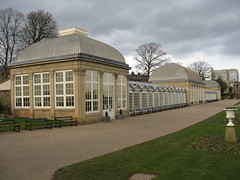
The
Botanical Gardens, Sheffield contain a surprising number of listed structures, including some beautifully restored glass pavilions. It's not hard to see why these mini crystal palaces are so popular both with local people and with visitors to the city; they are not just elegant buildings, they are also home to several interesting collections of plants.
Of course, the pavilions
haven't always looked like this; when I first moved to Sheffield in the mid-eighties they were in a very sorry state. Only the three domed sections remained, the linking walkways had long since disappeared. The parts that were left were in very poor repair, there were plants growing in the masonry, holes in the roofs and many broken panes of glass, some roughly boarded up, others left open to the elements. I remember thinking that the buildings must have been beautiful in their heyday , but I never imagined that I would see them reborn and restored along with the rest of the gardens.
The state of the pavilions seemed to mirror Sheffield's fortunes. When they were first
built for the opening of the Botanical Gardens in 1836, Sheffield was a prosperous place, sufficiently so for the purchase of the land and the creation and upkeep of the gardens to be paid for by the selling of shares and subscriptions to well-to-do residents. However both the gardens and the pavilions proved costly to maintain and so, like the fortunes of some of the city's inhabitants, they went through
good and bad times.
The upkeep of the pavilions proved to be particularly demanding: the panes of glass were damaged by weather, a hailstorm in 1843 is recorded to have broken 5700 square yards (4800 square metres) of glass; the wooden structure of the linking walkways was difficult to keep in good repair, with the result that they rotted and were demolished in around 1899; the domes even suffered bomb damage during World War II.
By the time I first saw the pavilions in 1987, the gardens had been publicly owned for many years. Of course this was the era of rate capping and cutbacks in public services, it was also a time when Sheffield was suffering economically with many local industries, particularly steel and mining, in serious decline. The council was in an impossible situation: the loss of business tax revenue, cuts in grants from central government and rate capping left them with a serious shortfall in their finances. (I am not suggesting that the council made the best possible financial decisions, that's a separate debate entirely, merely that I believe that whatever they did, they couldn't have made ends meet at that time.) Unsurprisingly maintaining garden buildings was not at the top of the council's list of priorities, so the poor state of the glasshouses was in fact a direct result of the city's economic downturn.
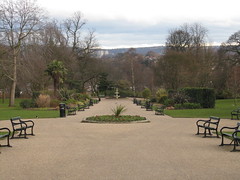
The opportunity for
restoration arrived some years later when the
Sheffield Botanical Gardens Trust made a successful bid for lottery funding. In 1997 the
Heritage Lottery Fund awarded just over £5 million to the Trust for the complete restoration of the gardens, but 25% in matching funds had to be raised. It was a
long and difficult project, but they managed it, the Botanical Gardens today are almost unrecognisable compared to my first visit.
The pavilions were once the largest glasshouses in the city (a title that is now held by the
Winter Gardens in the city centre), and are often erroneously associated with
Sir Joseph Paxton, in fact they are known locally as the "Paxton Pavilions". The ridge and furrow style of the linking walkways is typical of Paxton, particularly of his
glasshouse at
Chatsworth. Paxton was one of the judges for the competition to design the gardens, but the belief that the pavilions were designed by him is nothing more than a local legend, they were in fact
designed by a local architect, Benjamin Broomhead Taylor.
Some necessary changes have been made to the original designs during restoration. The rebuilt linking walkways are similar in appearance to the originals, but have been fabricated, rather appropriately, from stainless steel rather than wood; so hopefully they will last rather longer than the originals. However only the linking sections have been rebuilt, one old photo shows additional ridge and furrow glasshouses attached to each end of the building, but these appear to have been short lived - there are many
other images where they are missing, as they are now. Modern environmental controls and a system for collecting and storing rainwater for use in irrigation have been incorporated into the design.
The pavilions now contain collections of plants from the Himalayas, the Meditaerrranean, Australasia and South America; all plants that would not survive outside in Sheffield, but which thrive under glass. The glasshouses maintain their historic appearance whilst being functional buildings that will be used for many years to come. They are certainly pavilioned in splendour, and frequently
girded in praise.
LinksSheffield Botanical Gardens official websiteSheffield City Council official websiteSome
360 degree tours of the gardens, including views inside and outside the pavillions
Wikipedia entryThere is also a
Flickr group for the Botanical Gardens
hereFurther readingSheffield Botanical Gardens People Plants and Pavilions by R. Alison Hunter, published by the Friends of the Botanical Gardens, 2007. Available from the Botanical Gardens shop, local bookshops and tourist information offices, current price £4.95.
--
Originally published
here on my main blog
http://three-legged-cat.blogspot.com/Comments on the original post
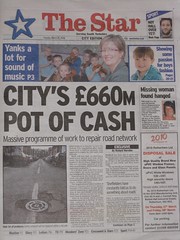 The Three Legged Cat presents a sing-along-a-blog-post.
The Three Legged Cat presents a sing-along-a-blog-post.

